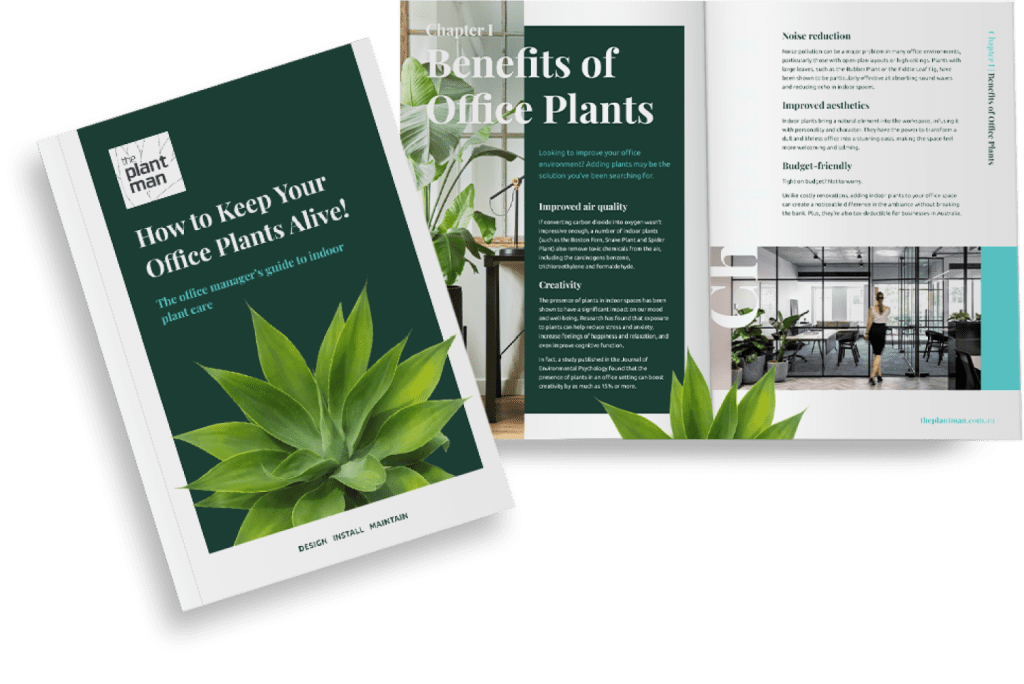Meet the Dracaena Massangeana, commonly known as the Happy Plant. This foliage plant, native to Sub-Saharan Africa, is renowned for its striking appearance – think bold green and yellow stripes perched atop tall cane-like stems. With the power to transform any room into a subtropical paradise, Happy Plants make a stunning addition to any indoor plant collection.
While they’re known for their vibrant foliage, Happy Plants also produce rare fragrant flowers that are said to bring good fortune and happiness. However, growing these flowers requires some TLC. In this article, we’ll take you through everything you need to know to care for this plant and ensure that your Happy Plant thrives, so you can enjoy a lush and vibrant indoor oasis.
How to care for a Happy Plant
Happy Plants are often regarded as one of the most low-maintenance indoor plants out there. However, it’s worth noting that there is no such thing as a plant that requires absolutely no care. As a Happy Plant owner, you’ll need to take certain measures to ensure your plant stays healthy and vibrant.
Here are some essential tips for Happy Plants care to keep in mind:
Provide a warm, humid environment
To enjoy the full range of happy plant benefits, it’s essential to create a warm and humid environment that mimics its tropical African origins. It’s best to avoid exposing your plant to cold droughts, so make sure it’s placed in a warm location with filtered bright light or dappled shade if outside. Avoid direct sunlight, which can scorch the leaves.
Keep the temperature between 10-30 degrees Celsius, and remember to mist your Happy Plant occasionally with water to maintain humidity levels. Inadequate humidity can lead to brown tips on leaves and stunted growth, so ensuring a warm and humid environment is crucial for the health and growth of your Happy Plant.
Remove dust from leaves
While outdoor Happy Plants benefit from natural rainfall that helps keep their foliage clean, indoor plants require regular maintenance to keep their leaves free of dust and debris. As a responsible plant owner, it’s your duty to play the role of mother nature by cleaning the leaves of indoor plants regularly.
The lush leaves of the Happy Plant are particularly susceptible to collecting dust, which can clog their pores and hinder their growth. To keep your plant thriving, set aside a few minutes every few weeks to gently wipe down the leaves with a damp cloth. This will not only remove any dust or dirt but also allow the leaves to breathe and absorb nutrients more efficiently.
Neglecting to clean your Happy Plant’s leaves can lead to a host of problems, including yellowing, stunted growth, and pest infestations.
Water
Proper watering is crucial to the health and growth of your Happy Plant. During the warmer months, it’s recommended to water your plant once a fortnight, allowing the soil to dry out slightly before the next watering session. In the winter months, decrease the watering frequency to once every 3-4 weeks.
To ensure your Happy Plant thrives, it’s important to avoid overwatering, which can contribute to root rot and other issues. Before watering, check the soil’s moisture level by sticking your finger about an inch deep into the soil. If it feels dry, it’s time to water. However, if the soil still feels damp, hold off watering for a few more days.
General maintenance
While Happy Plants are relatively low-maintenance when it comes to feeding, they still require some nutrients to stay healthy and vibrant. As a general rule, it’s best to fertilise your plant once or twice a year during the spring or summer months.
When choosing a fertiliser, opt for a general-purpose houseplant fertiliser, which contains a balanced blend of nutrients. Avoid using too much fertiliser, as this can lead to leaf burn and other problems. It’s best to err on the side of caution and use less than the recommended amount, rather than over-fertilising.
Remember to always follow the instructions on the fertiliser package and dilute it according to the recommended ratio. Applying too much fertiliser can be harmful to your Happy Plant, so it’s essential to use it in moderation.
How to pot Happy Plants
So you’ve bought a Happy Plant and chosen a warm space with filtered light that your plant will call home. But how do you go about potting your Happy Plant so you can move it to its dream location?
Here are three easy steps to potting a Happy Plant:
- Find the right pot
As a relatively large indoor plant, Happy Plants require a pot that can accommodate their growth for several years. The best plant pot for Happy Plants is not only spacious but also has good drainage to prevent waterlogging and root rot.
If you’re concerned about the pot’s appearance, it’s a good idea to choose a stylish and timeless design that complements your office decor. Keep in mind that repotting a fully-grown Happy Plant can be challenging and time-consuming, so selecting a suitable pot from the outset can save you from this arduous task down the line. - Time to get potting
To pot your new Happy Plant, start by filling the base of the pot with a small amount of potting mixture. Gently remove your Happy Plant from its existing pot and place it into the new pot to test for size. It’s recommended to have an extra pair of hands to help stabilise the top half of the Happy Plant, as the upper portion is relatively heavier than the bottom.
It’s crucial to ensure that the plant is stable in the pot before proceeding to fill the rest of the container with potting mix. If the plant falls over due to a lack of stabilisation, it may damage the roots, hindering the growth of the plant. - Ensure the plant is in the centre
You’ll want to make sure your Happy Plant is straight and in the centre of the pot before you finish the potting process. Try a few different positions within the pot and have someone several feet away confirm that the plant is straight. - Pack down more potting mixture
Now that your Happy Plant is straight and at the centre of its pot, you are ready to finish filling the pot with potting mixture. Make sure you pack down more potting mix around the existing root ball to compensate for the plant’s weight.
Where to place a Dracaena Massangeana indoors
While Dracaena/ Happy Plants can grow outdoors in certain conditions, they are typically best suited for indoor environments where their surroundings can be more closely monitored and controlled. When it comes to lighting, Happy Plants are able to tolerate lower light levels, making them a versatile option for various indoor locations. However, they still require moderate to bright indirect sunlight to thrive.
When positioning your Happy Plant, it’s important to find a balance between providing enough natural light without subjecting the plant to too much direct sunlight. A north-facing window can be an ideal location, as it will receive natural light throughout the day without exposing the plant to direct sunlight that may damage its leaves.
In addition to lighting, humidity is also a crucial factor in the health and happiness of your Happy Plant. Ideally, the plant should be kept in a humid environment to mimic its tropical origins. Bathrooms and kitchens can be excellent locations for Happy Plants, as they are typically more humid than other rooms in the house. However, if you choose to place your Happy Plant in a dryer environment, consider misting its leaves with water every few days to increase humidity around the plant.
Additional Happy Plant care tips
Taking care of a Happy Plant is a rewarding experience, and with a little extra attention, your plant can live a long and healthy life. To help you achieve that, here are a few extra tips to growing a flourishing Happy Plant:
- Prune your Happy Plant: Regular pruning is essential for keeping your Happy Plant healthy and attractive. Trimming off any dead, yellow, or brown leaves will help promote healthy new growth.
- Avoid cold drafts: Happy Plants are susceptible to cold drafts, so avoid placing them near doors, windows, or air conditioning vents that might expose them to cold blasts of air.
- Keep an eye out for pests: Just like any other indoor plant, Happy Plants can be susceptible to pests such as spider mites, mealybugs, and scale insects. If you notice any signs of infestation, take immediate action to remove the pests and prevent them from spreading to other plants.
- Rotate your plant: Happy Plants tend to grow towards the light, so rotating your plant every few weeks will help ensure that all sides of the plant receive equal amounts of light and don’t become lopsided.
If you’re unsure about how to incorporate plants into your workplace, The Plant Man team can help you select the right plants to complement your office space and culture. Our team of experts can also provide ongoing care and maintenance, ensuring your Happy Plants (and other indoor plants) thrive year-round.
To find out how a Happy Plant could inspire happiness and creativity within your office, get in touch with the team at The Plant Man.











